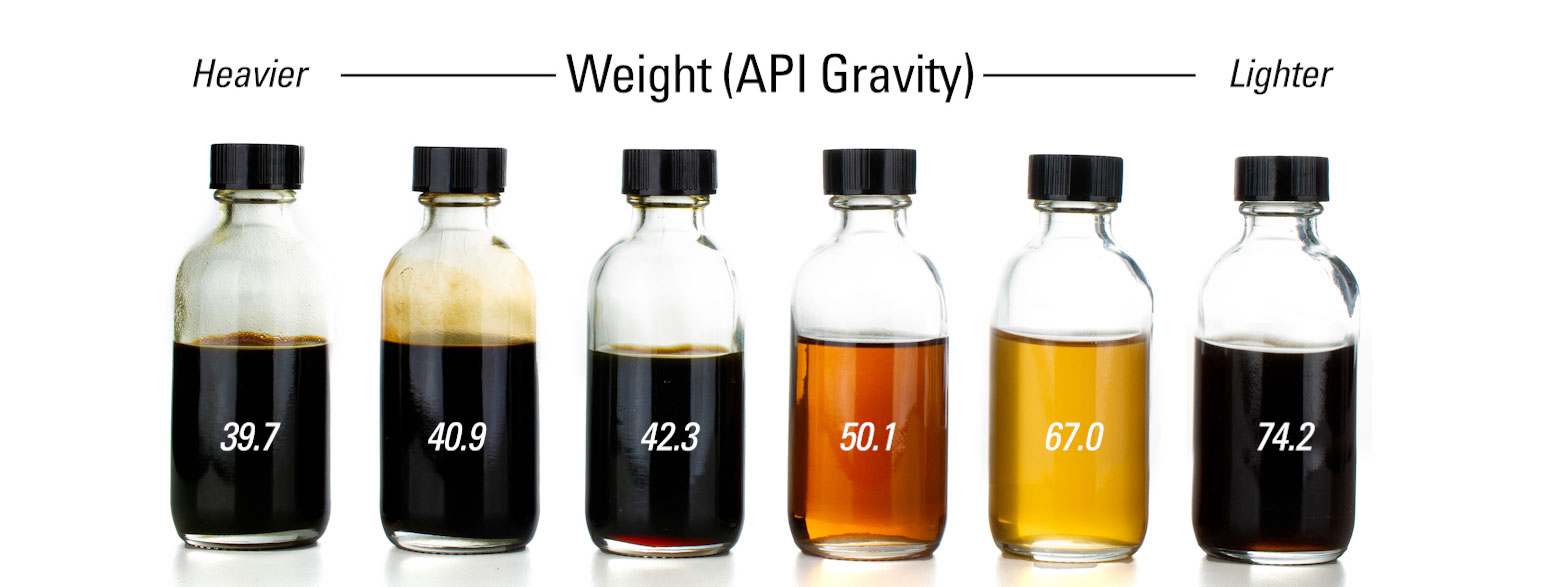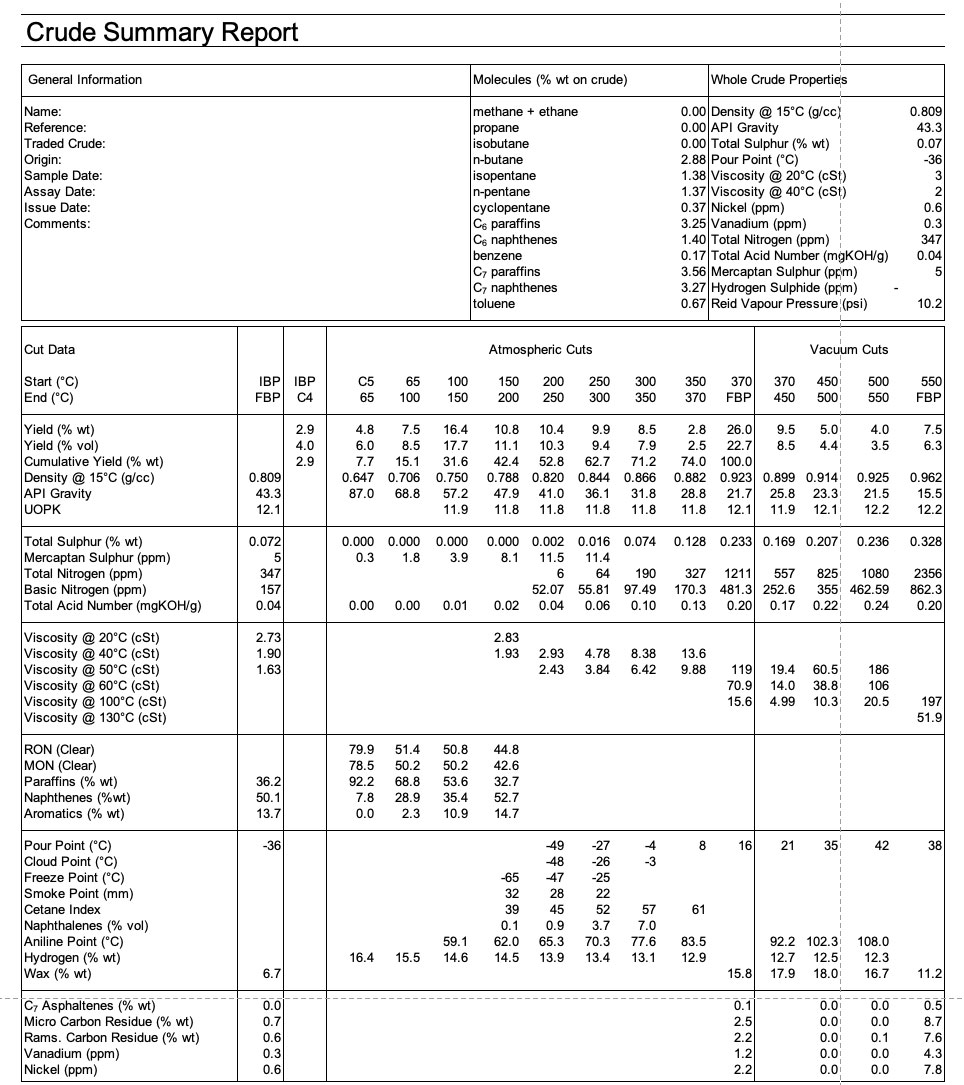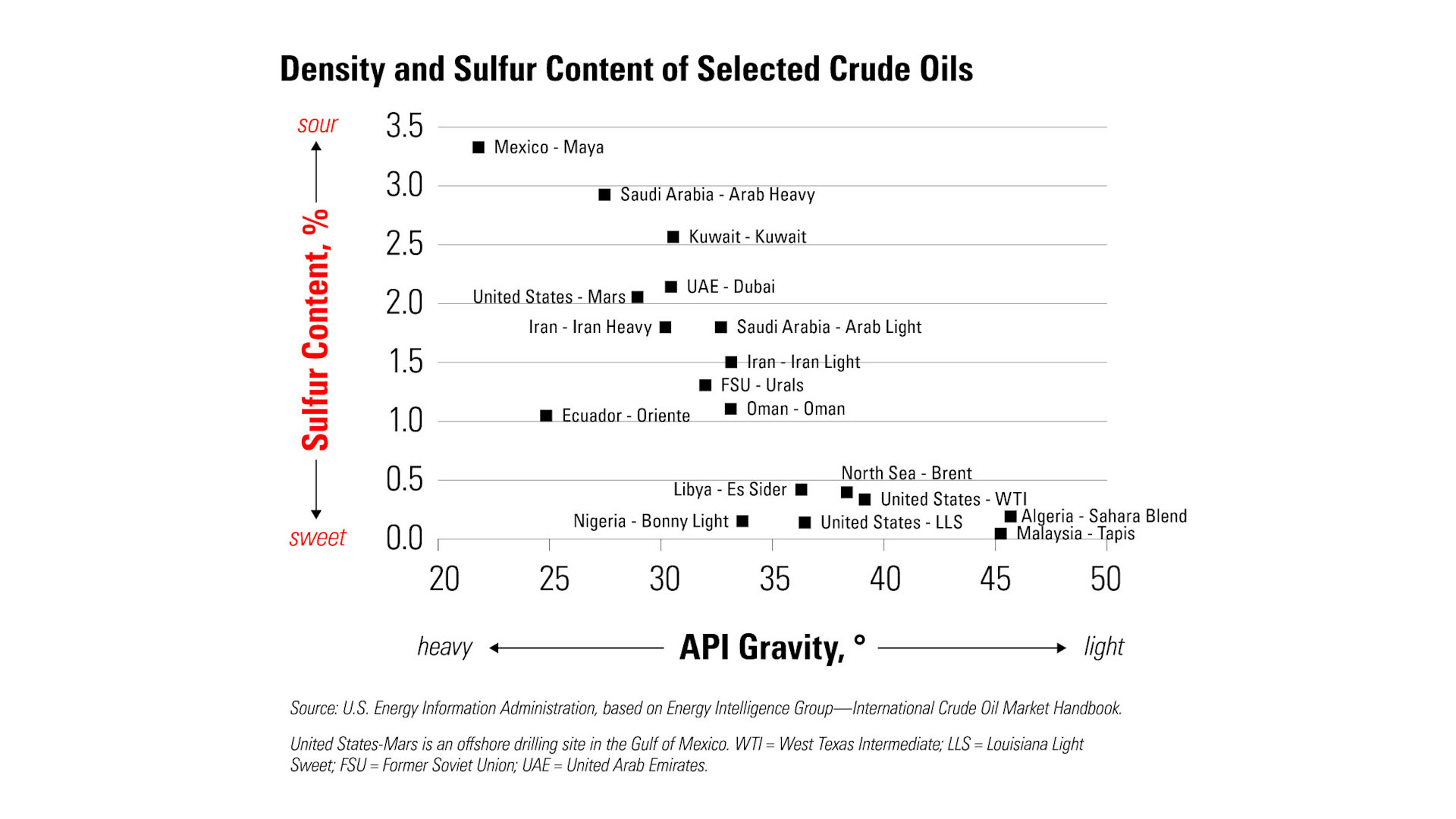What is Crude Oil?
What are we referring to when we talk about oil?
Crude oil is a black liquid found in geological formations. It is a fossil fuel, which means it is formed from dead organisms that are buried under intense heat and pressure.
But not all crudes are alike. There are three primary qualities that differentiate one oil from another: Weight, Sweetness, and TAN count.
Weight of Crude: Light Oil vs Heavy Oil
Heavy oil evaporates slowly and contains material that will be used to make heavy products like asphalt.
Light oil requires less processing and produces a greater percentage of gasoline and diesel than heavy oil.
The standard unit of measurement for oil weight is API Gravity. This scale was created by the American Petroleum Institute to measure the density of oil. Below are some visual examples of heavy oil and light oil.
The general rule of thumb to remember is the higher the API, the lighter the oil. The lower the API, the heavier the oil.


Sweet or Sour Crude Oil
You’ve probably heard people referencing “sweet” and “sour” oil.
What makes a particular crude sweet or sour is the amount of sulfur it contains. Sweet crude has very low levels of sulfur, well under 1%. Sour crude has as much as 1-2% of sulfur.
Midstream companies and refiners that transport, store, and process sour oil know they need extra treating capabilities to take out the sulfur and sweeten the product.

Tan Count of Crude Oil
TAN stands for “Total Acid Number.” The TAN count of oil is a measure of how corrosive it is.
If a crude has a high TAN number, producers must use more robust metallurgy than standard so their processes can handle that corrosivity and keep the crude in the pipe.

The Ideal Oil: Light and Sweet
Companies use a test called an assay to get a full chemical breakdown of what is in a barrel of oil. The ideal oil is light and sweet with a low TAN count, while the harder to process oil is heavy and sour with a high TAN count.

Types of Crude Oil on the Market
There are over one hundred different crude oils traded on the market today.
These oils are typically labeled by the region they come from, and they have a specific chemical makeup. This graph below shows the sulfur content and weight of some of the most common.

Benchmark Crude Oils: OPEC, WTI and Brent
The three most well known regional benchmark oils are WTI, Brent, and OPEC.
- WTI stands for West Texas Intermediate. This is oil produced in the United States. It is typically on the lighter end of the spectrum, at an API gravity of 39.6. WTI sulfur content is 0.24%, putting it at the sweeter end of the spectrum.
- Brent oil comes from the Scottish Brent and Ninian Systems located in the North Sea. This oil is also light and sweet, with an API gravity of 38.3. Brent sulfur content is 0.37%.
- OPEC stands for “Organization of Petroleum Exporting Countries.” It is a collective group of seven different crude oils from Algeria, Saudi Arabia, Nigeria, Dubai, Indonesia, Venezuela, and the Mexican Isthmus. The oil from these regions is typically on the heavier and sour end of the spectrum.
While logistics also play a role, typically the lighter and sweeter an oil is, the more expensive it’s going to be.










































